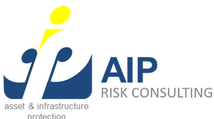United Nations Security Council Counter Terrorism Committee Executive Directorate
Transportation sector
Transportation facilities and vehicles are attractive targets for terrorist attacks because of the high concentration of potential victims.
They also offer the possibility of turning vehicles into weapons, with a potentially significant increase in victims (e.g., aeroplanes). The difficulty of protecting the many potential targets while maintaining smooth transport operations and the difficulty of determining the
probability of attack also increase their appeal to terrorists. In addition, open access to public transportation limits the scope of potential security improvements. Not every attack on public transportation will amount to a threat to critical infrastructure. However, the table below provides a snapshot of the types of transportation most frequently targeted in terrorist attacks worldwide. The most frequent targets were buses and trains, which comprised 61.6% of all transportation targets worldwide between 1970 and 2014.
According to START, airports represented 6.4% of all transportation targets and subway systems made up 1.9% of all transportation targets.
Critical transportation infrastructure is characterized by a strong linkage between
public and private organizations. The transportation sector is especially complex
because public/private partnerships are not just bilateral in nature, but rather
a complex system of partnerships between a number of public and private institutions. Moreover, it is expected that the complexity of critical transport infrastructure will increase over time, as new communications networks are included in the overall transportation network. Mistrust, unaligned goals, diverging strategies, unfair risk accumulation on few partners or inefficient distribution of responsibilities can result in failure of the public/private partnership.

Extracted from the Physical Protection of Critical Infrastructure Against Terrorist Attacks Report – March 2017

